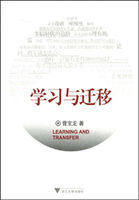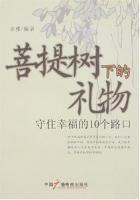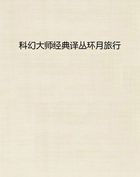Vocabulary 词汇
buttered ["b?t?d] adj. 涂奶油的,加奶油的;
v. 涂黄油在……(butter的过去分词)
mayonnaise ["mei?"neiz] n. 蛋黄酱
lettuce ["letis] n. [园艺] 生菜,莴苣
Cheddar["t?ed?] n. (英国产的)切达干酪(干酪的一种)
humble["h?mbl] adj. 谦卑的,恭顺的;
vt. 使谦恭,使威风扫地
frequent ["fri:kw?nt, fri"kwent] adj. 频繁的;
vt. 常到;常去;时常出入于
Practice
1.What are the most famous sandwiches in the UK?
2.When and where the word “sandwich” appeared?
3.Why the Earl of Sandwich invent sandwiches?
译文
英国人通常会在午餐时间吃三明治,当然也有在别的时间吃的。三明治是两片面包中间夹着馅料,一般面包上会涂上黄油或者蛋黄酱,而中间的馅料通常是肉或者奶酪,再放些生菜。
三明治的种类有几百种,而每一种都有其独特的风味。在英国,吃得最多、最著名的几种三明治包括:BLT(也就是培根、生菜加西红柿,一般还要加上蛋黄酱)、庄稼汉(源自农场工人传统的做法,配料有切达奶酪、泡菜和沙拉酱),还有金枪鱼和鸡蛋三明治。
因为三明治吃起来方便快捷,因此不管是什么种类的三明治都很受欢迎。英国人每年要吃掉28亿个三明治,对于人口仅6千万的国家来说这可不是小数哦!今天的英国人都在吃三明治,但以前可不是这样的。不可思议的是,如今那么不起眼的三明治,原来只是英国富豪们的小点心,三明治还有一段有趣而又幽默的历史呢。
1762年,“sandwich”这个单词第一次出现在英国作家爱德华·吉本斯的日记上。他当时回忆到看见全国首富在吃一种夹在面包片中的一小片冷肉,吉本斯觉得这样的吃法很不好。
这种小吃以桑威奇伯爵四世的名字命名(伯爵是富有的贵族,拥有大片土地同时拥有一定的政治权利)。桑威奇惯赌,痴迷赌博甚至到了饭也不想吃的地步,为了不中断赌博,桑威奇伯爵就让赌博俱乐部的厨子为他准备两片面包中间夹些牛肉来吃,这样他就可以空出一只手来玩牌,再也不用为了吃肉而弄脏两只手了。
其他人看到他这个吃法,也都开始点菜:“来份跟桑威奇一样的!”于是三明治就这么诞生了。一开始它只是英国有钱人家的小吃而已,后来迅速流行起来成为各处都可吃到的便捷食品。
练习
1.在英国,最著名的三明治有哪些?
2.“三明治”这个单词最早什么时候出现,出现在哪里?
3.桑威奇伯爵发明三明治的原因是什么?
1.BLT, Ploughman’s, Tuna, and Egg sandwiches
2.1762, in the diary of the English author Edward Gibbons
3.Sandwich was a frequent gambler, to avoid having to stop gambling and his hands become dirty from the meat.
09 Mother’s Day History 母亲节由来
The history of Mother’s Day is centuries old and goes back to the times of ancient Greeks, who held festivities to honor Rhea, the mother of the gods. The early Christians celebrated the Mother’s festival on the fourth Sunday of Lent to honor Mary, the mother of Christ. Interestingly, later on a religious order stretched the holiday to include all mothers, and named it as the Mothering Sunday. The English colonists settled in America discontinued the tradition of Mothering Sunday because of lack of time. In 1872 Julia Ward Howe organized a day for mothers dedicated to peace. It is a landmark in the history of Mother’s Day.
In 1907, Anna M. Jarvis (1864-1948), a Philadelphia schoolteacher, began a movement to set up a national Mother’s Day in honor of her mother, Ann Maria Reeves Jarvis. She solicited the help of hundreds of legislators and prominent businessmen to create a special day to honor mothers. The first Mother’s Day observance was a church service honoring Anna’s mother. Anna handed out her mother’s favorite flowers, the white incarnations, on the occasion as they represent sweetness, purity, and patience. Anna’s hard work finally paid off in the year 1914, when President Woodrow Wilson proclaimed the second Sunday in May as a national holiday in honor of mothers.
Slowly and gradually the Mother’s day became very popular and gift giving activity increased. All this commercialization of the Mother’s day infuriated Anna as she believed that the day’s sentiment was being sacrificed at the expense of greed and profit.
Regardless of Jarvis’s worries, Mother’s Day has flourished in the United States. Actually, the second Sunday of May has become the most popular day of the year. Although Anna may not be with us but the Mother’s day lives on and has spread to various countries of the world. Many countries throughout the world celebrate Mother’s Day at various times during the year, but some such as Denmark, Finland, Italy, Turkey, Australia, and Belgium also celebrate Mother’s Day on the second Sunday of May.
Vocabulary 词汇
religious [ri"lid??s] adj. 宗教的,虔诚的,严谨的;
n. 修道士,尼姑
observance [?b"z?:v?ns] n. 遵守,仪式,惯例,庆祝
incarnations ["inkɑ:"nei??n] n. 化身,道成肉身,典型
commercialization [k?"m?:??lai"zei??n" -li"z-] n. 商品化,商业化
flourished ["flauri?] n. 兴旺,炫耀,华饰;















